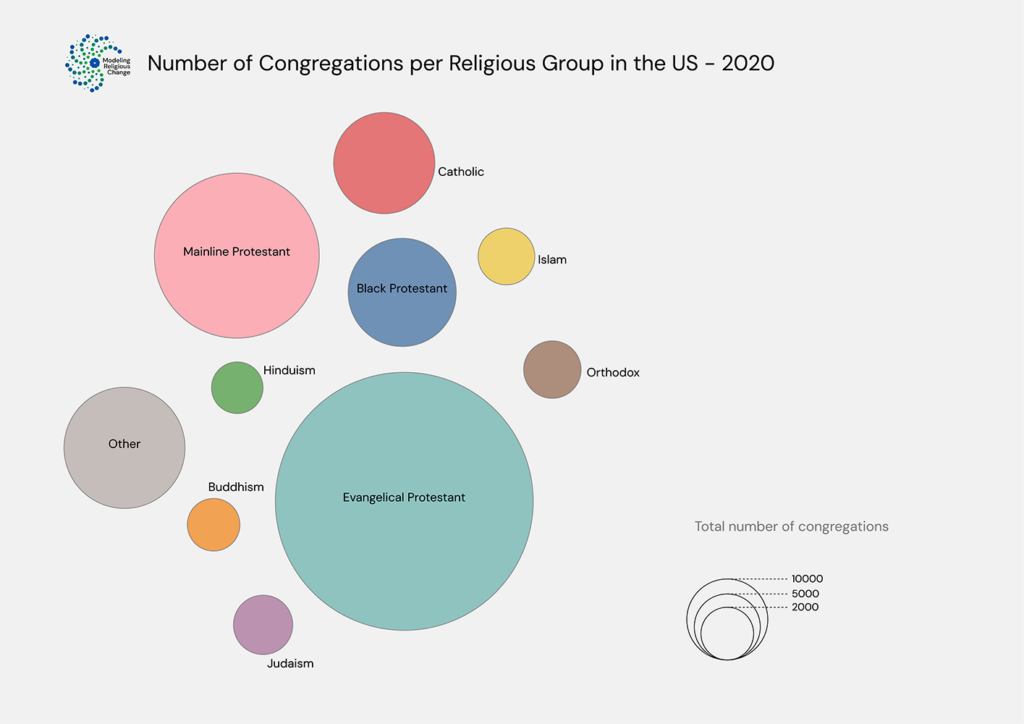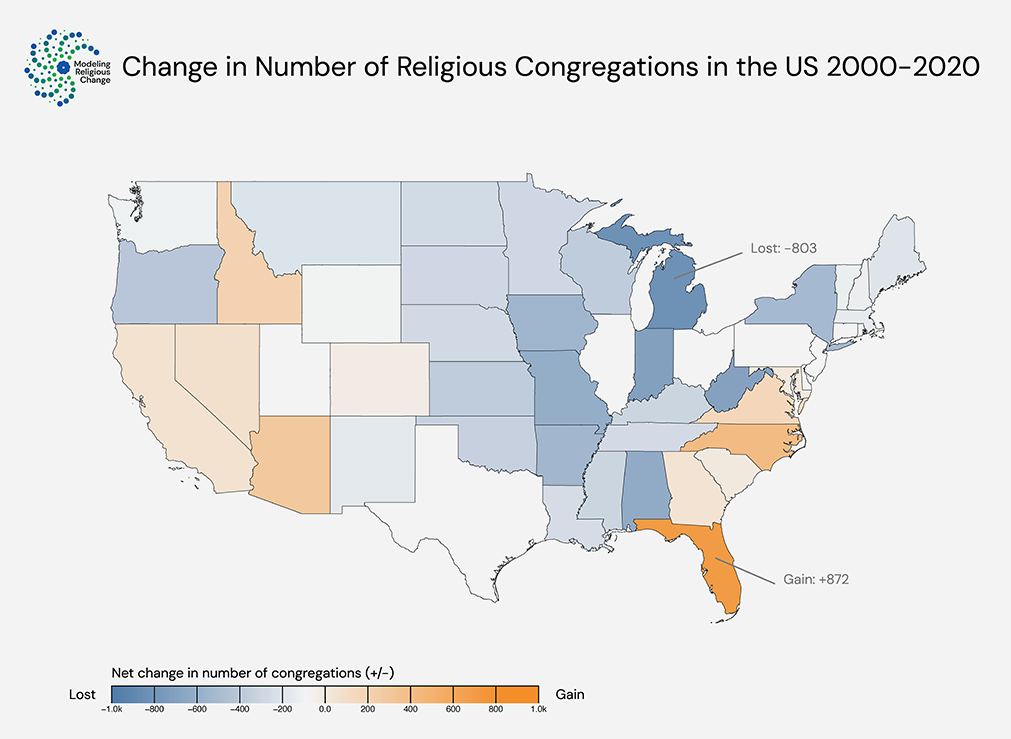According to the 2020 U.S. Religion Census, there are 356,739 religious congregations in the United States, comprised of 161 million people (48.6% of the population). A congregation is a group of persons who meet together regularly for worship. In different religious groups this can mean parishes, churches, synagogues, mosques, temples, or other sites where a religious body has regularly scheduled worship services. Sociologists use these numbers to learn more about congregational life in different religions.
Let’s compare Evangelical and Catholic congregations. The number of Evangelical Protestant congregations greatly outnumbers any other congregation, at 199,078 congregations. However, Evangelical Protestants are only the second largest religious group in the US, representing 16.5% of the US population, or 54 million people. Catholics, the largest religious group in the US, account for 18.5% of the US population, or around 61 million people. But there are only 19,511 Catholic congregations in the US, a mere tenth of the number of Evangelical congregations!

This discrepancy is explained by looking at the differing culture of Evangelical and Catholic congregations. Evangelical Protestant churches tend to be small; according to some estimates, Evangelical churches average 65 members in their worship services. In contrast, a single Catholic parish may contain thousands of Catholics, showcasing a consolidation of Catholic congregations. It also suggests that Catholics do not attend religious services as often, requiring less physical space and fewer buildings; only 33% of Catholics attended services monthly in-person during 2020, compared to 52% of White Evangelical Protestants.
Between the 2010 and 2020 US Religion Censuses, the number of congregations increased 2.2% and the number of adherents increased 6.5%, which is lower than the 7.4% increase in the total US population. Secularization is evident in this trend, with many states in the US losing congregations, despite gains in other states.

Many factors influence minority religious groups’ ability to create sites of worship, including local community resistance to allowing non-Christian faiths to build houses of worship or congregate. Trends of secularization and growing minority religions explain part of the change in the number of religious congregations in the US.
